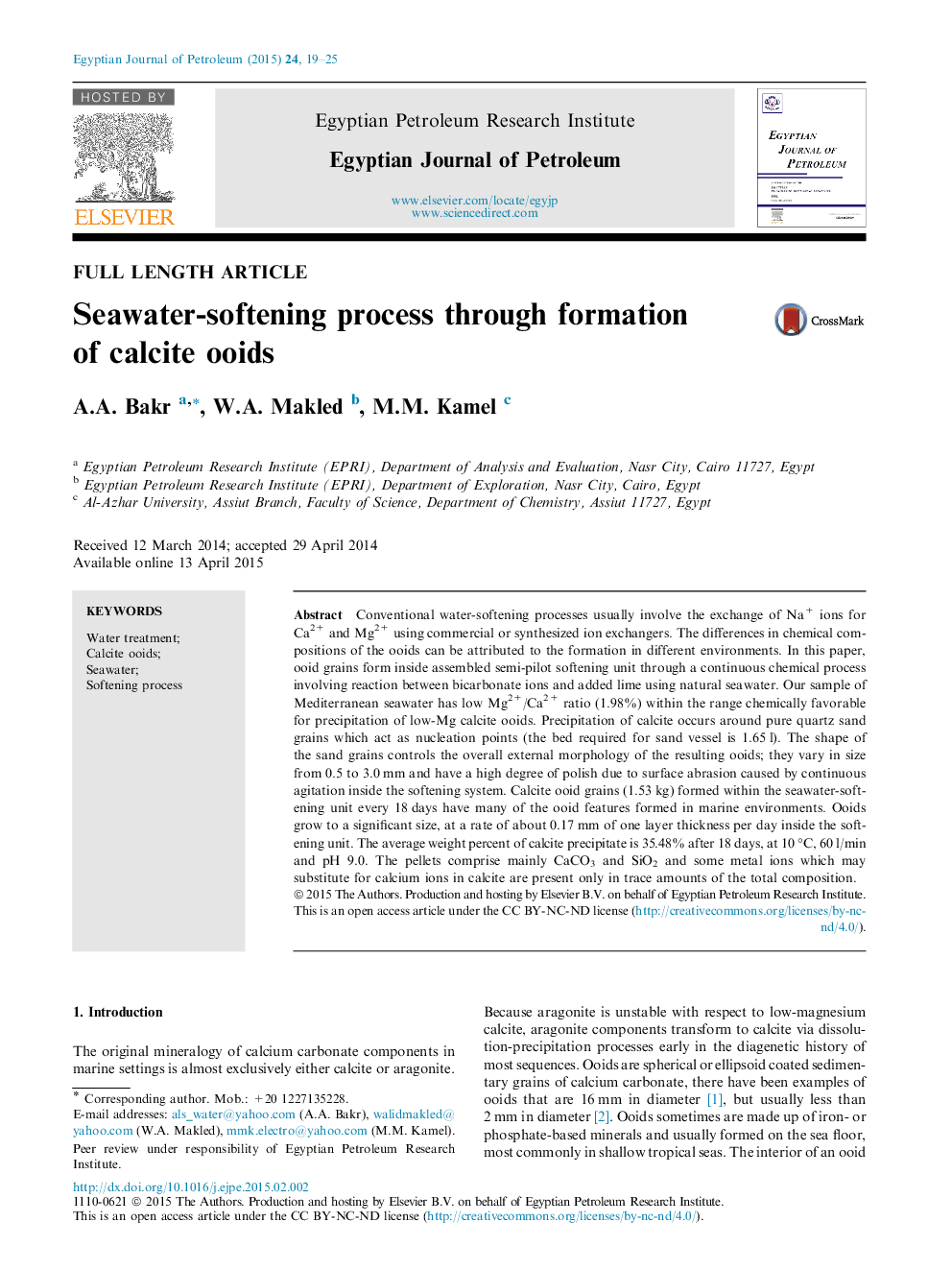| Article ID | Journal | Published Year | Pages | File Type |
|---|---|---|---|---|
| 1756809 | Egyptian Journal of Petroleum | 2015 | 7 Pages |
Conventional water-softening processes usually involve the exchange of Na+ ions for Ca2+ and Mg2+ using commercial or synthesized ion exchangers. The differences in chemical compositions of the ooids can be attributed to the formation in different environments. In this paper, ooid grains form inside assembled semi-pilot softening unit through a continuous chemical process involving reaction between bicarbonate ions and added lime using natural seawater. Our sample of Mediterranean seawater has low Mg2+/Ca2+ ratio (1.98%) within the range chemically favorable for precipitation of low-Mg calcite ooids. Precipitation of calcite occurs around pure quartz sand grains which act as nucleation points (the bed required for sand vessel is 1.65 l). The shape of the sand grains controls the overall external morphology of the resulting ooids; they vary in size from 0.5 to 3.0 mm and have a high degree of polish due to surface abrasion caused by continuous agitation inside the softening system. Calcite ooid grains (1.53 kg) formed within the seawater-softening unit every 18 days have many of the ooid features formed in marine environments. Ooids grow to a significant size, at a rate of about 0.17 mm of one layer thickness per day inside the softening unit. The average weight percent of calcite precipitate is 35.48% after 18 days, at 10 °C, 60 l/min and pH 9.0. The pellets comprise mainly CaCO3 and SiO2 and some metal ions which may substitute for calcium ions in calcite are present only in trace amounts of the total composition.
